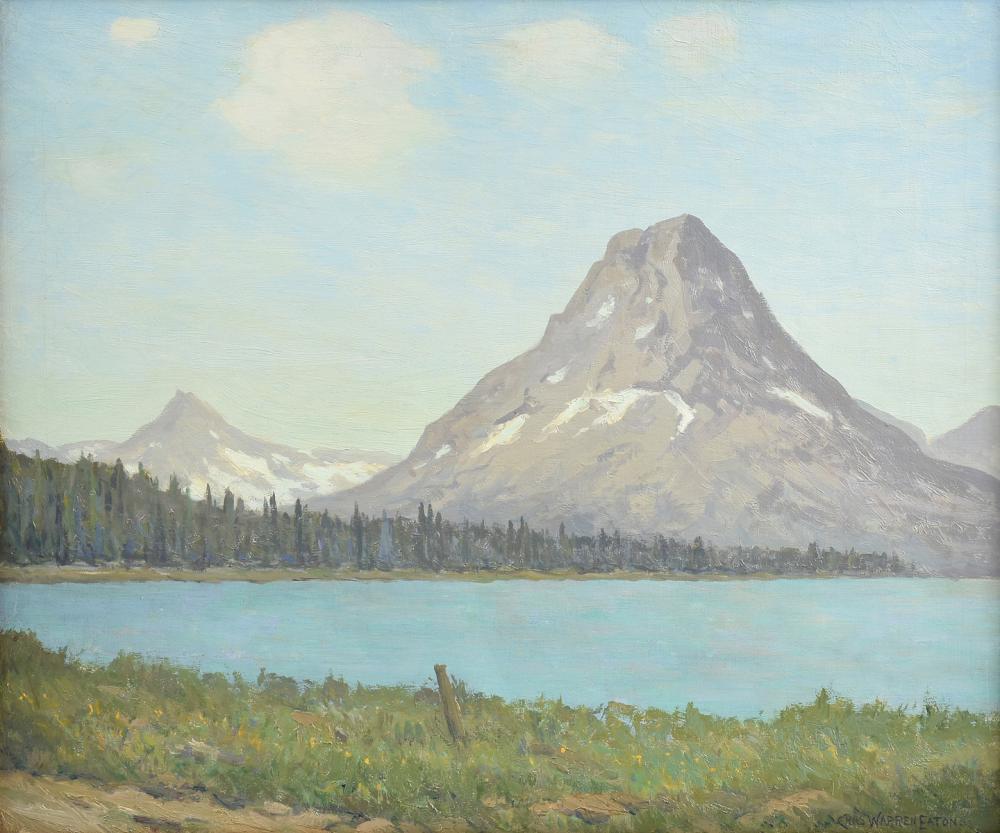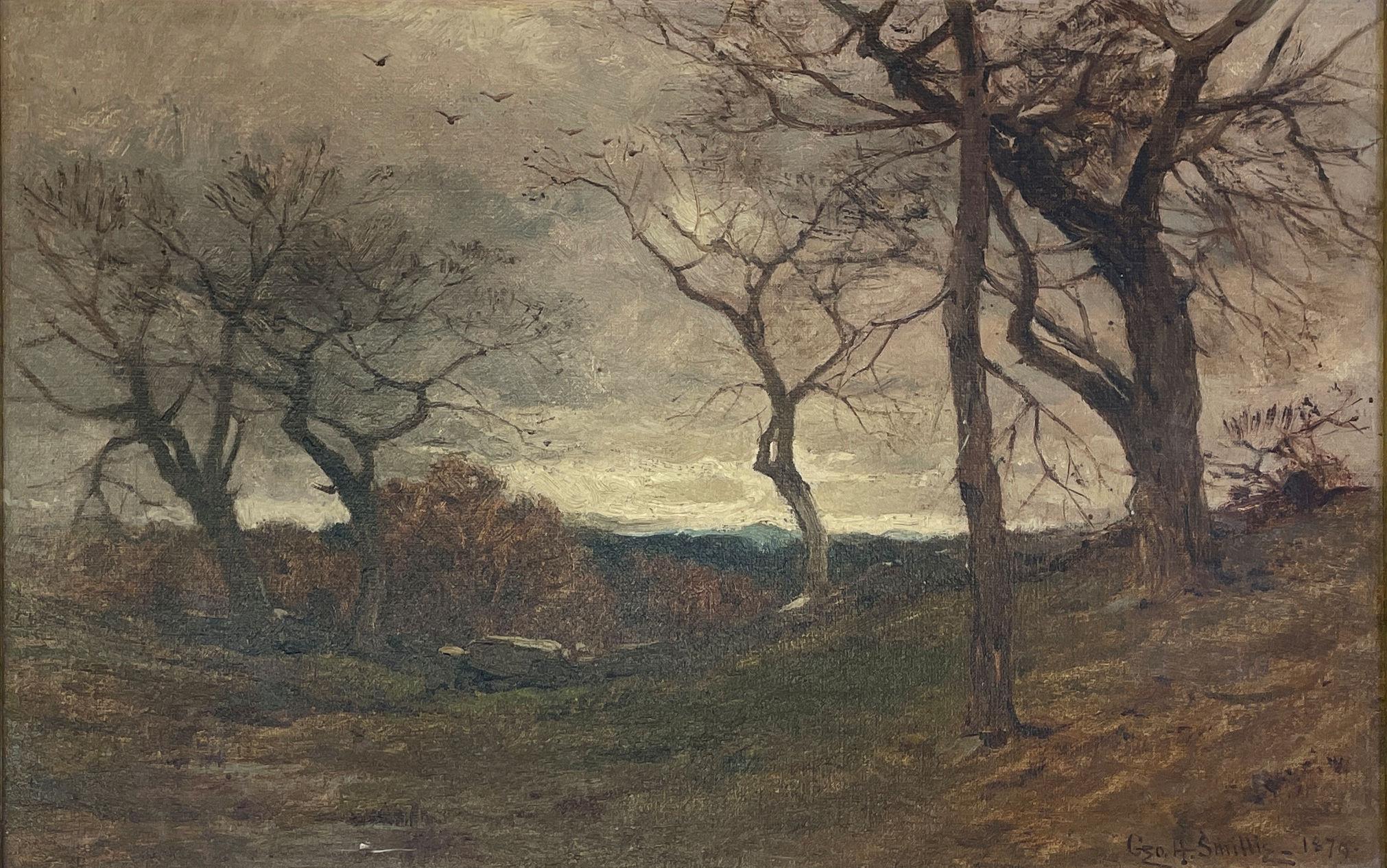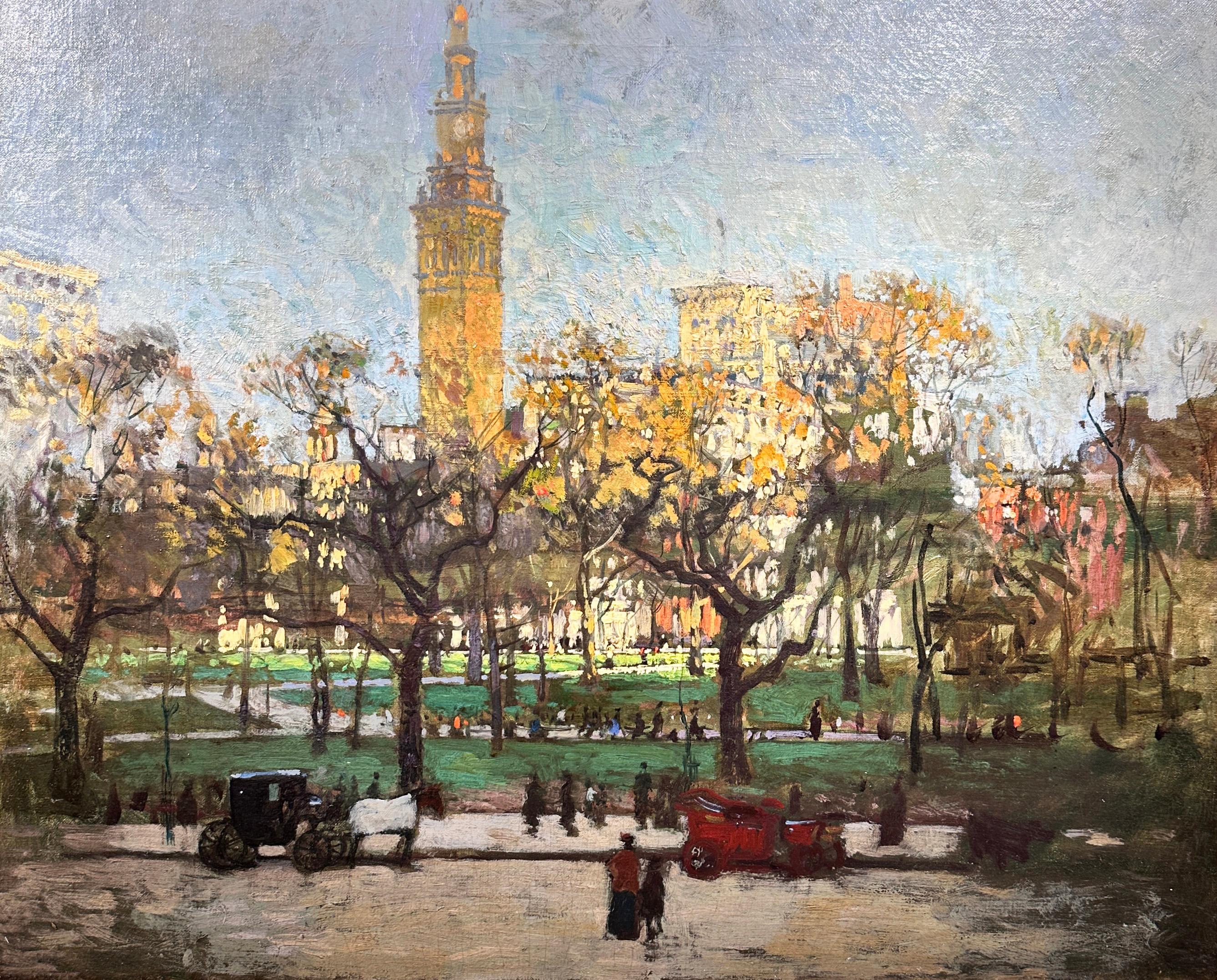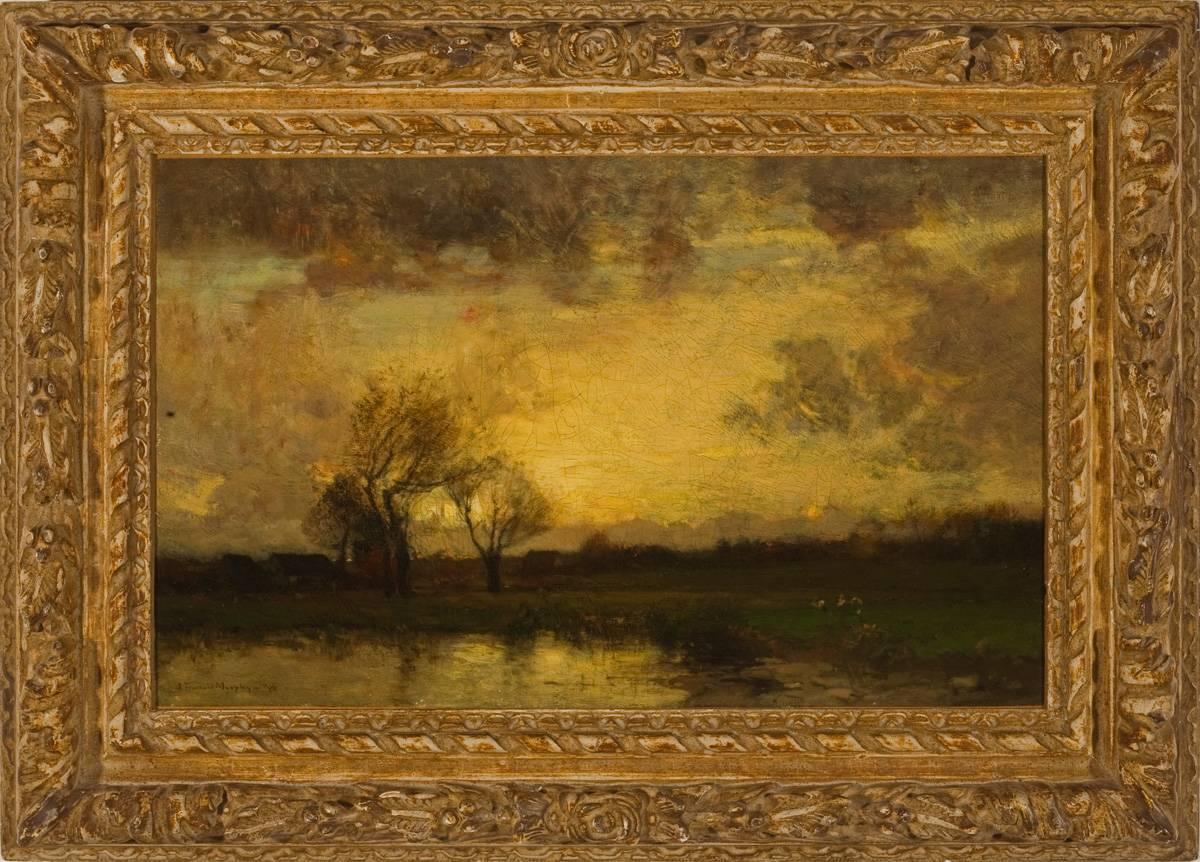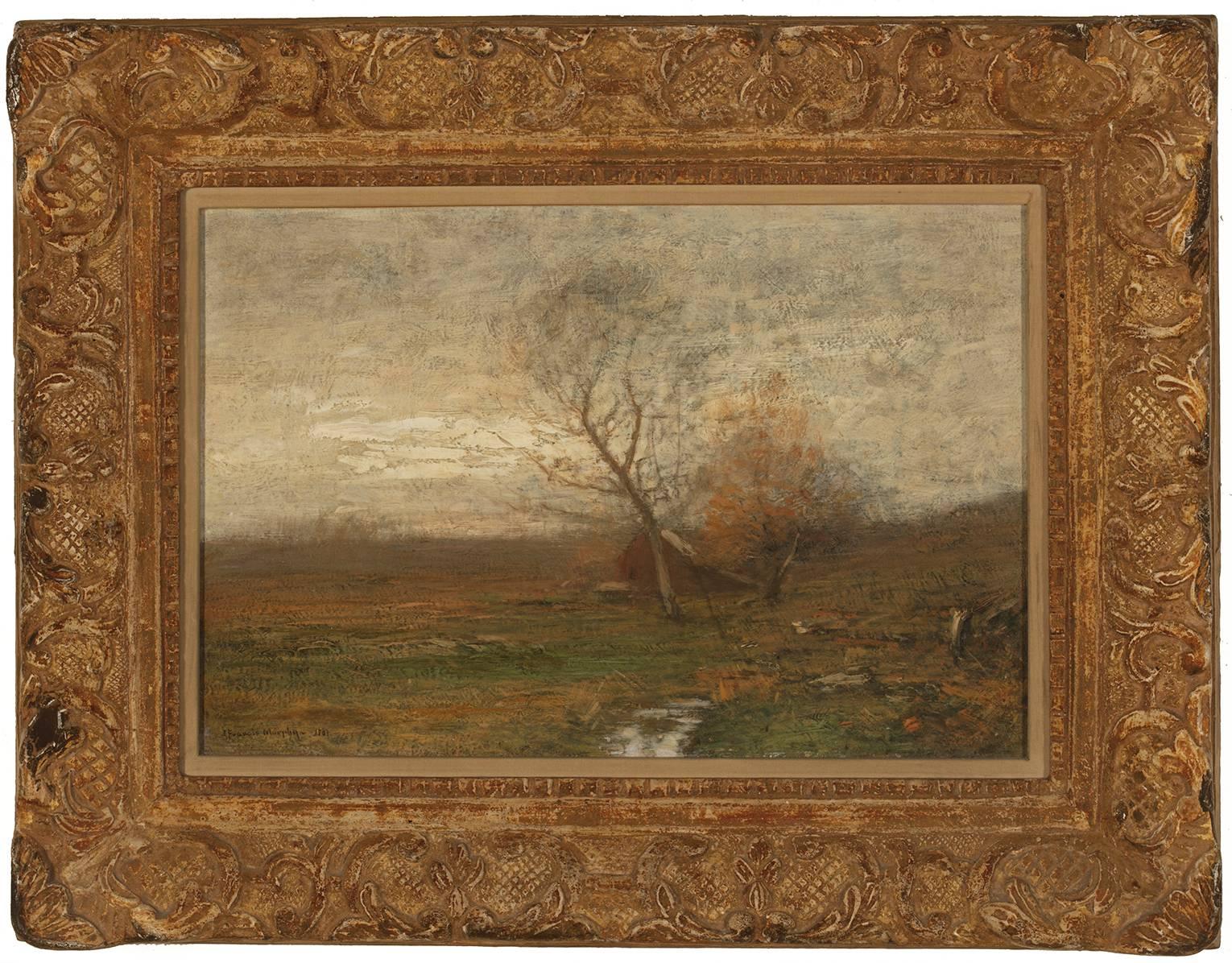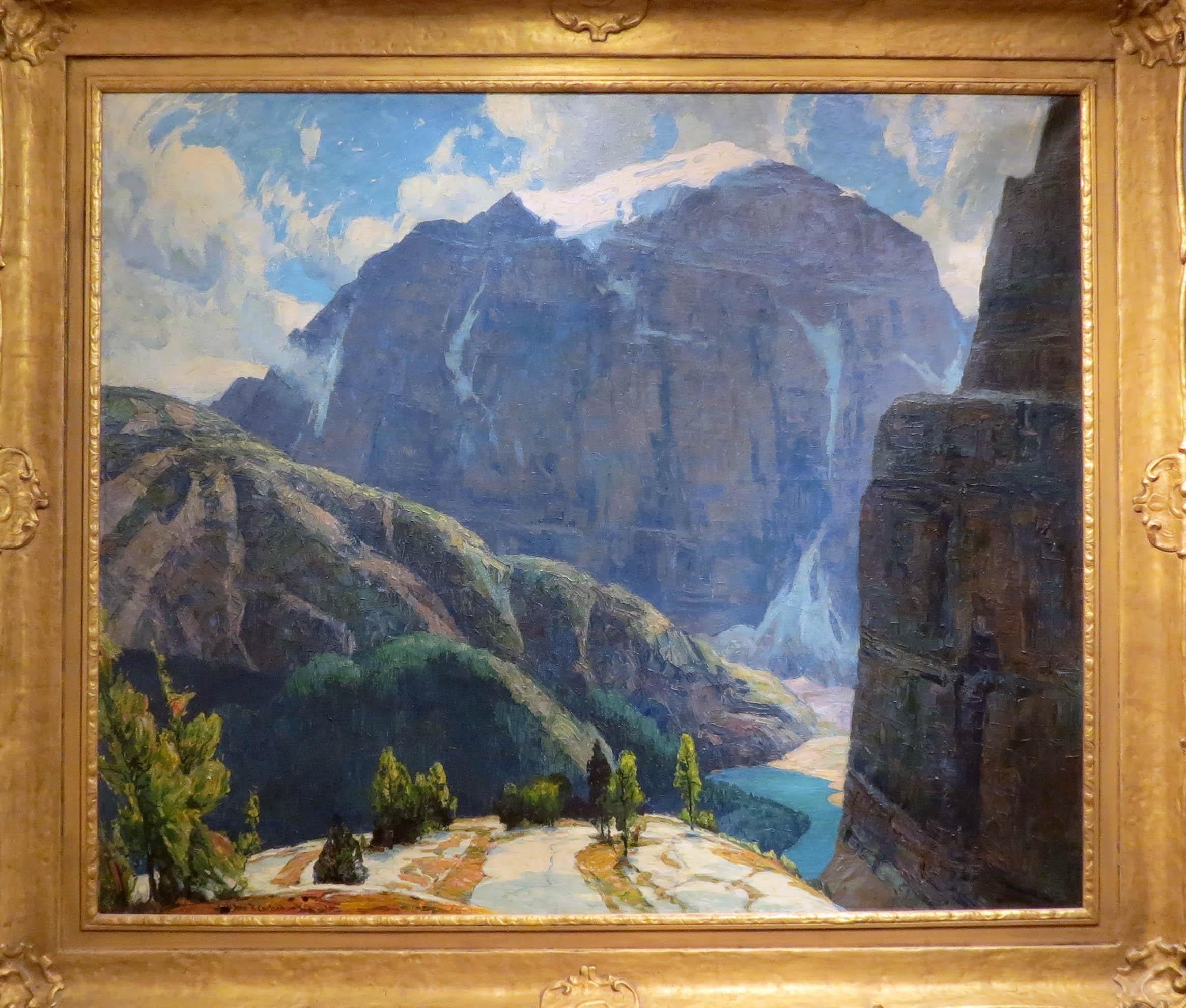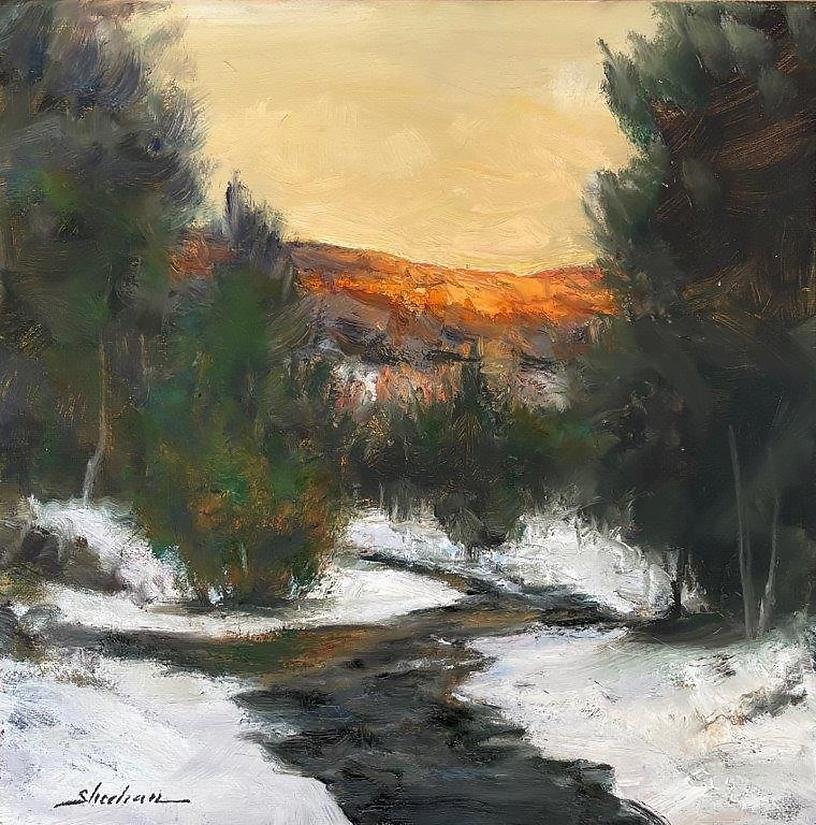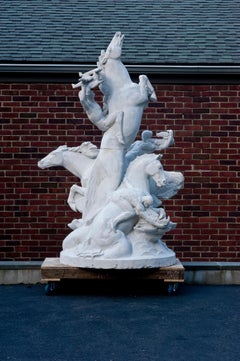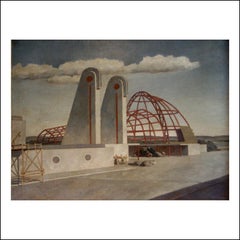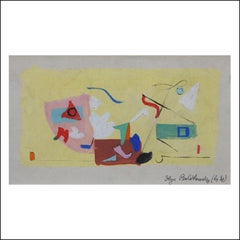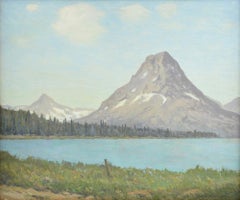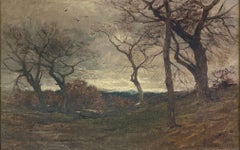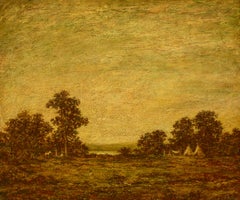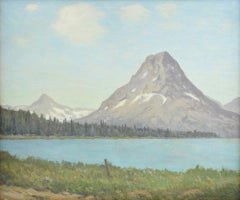
"Mount Rockwell, Glacier National Park, Montana, " Mountain Lake Landscape View
Want more images or videos?
Request additional images or videos from the seller
1 of 10
Charles Warren Eaton"Mount Rockwell, Glacier National Park, Montana, " Mountain Lake Landscape View1921
1921
About the Item
About the Seller
5.0
Platinum Seller
These expertly vetted sellers are 1stDibs' most experienced sellers and are rated highest by our customers.
Established in 2008
1stDibs seller since 2019
160 sales on 1stDibs
More From This SellerView All
- 1, 000 piece Museum Quality Collection of Art & Objects from NYC 1939 Worlds FairBy Chester BeachLocated in New York, NY1,000 piece Museum Quality Collection of Art & Objects from NYC 1939 Worlds Fair is available for sale. This sculpture, "Riders of the Elements," is the original 7' plaster maquette from the NYC 1939 World's Fair by Chester Beach...Category
1930s Art Deco Figurative Sculptures
MaterialsCanvas, Oil, Photographic Paper, Plaster
- 1, 000 piece Museum Quality Collection of Art & Objects from NYC 1939 Worlds FairBy Harry LaneLocated in New York, NY1,000 piece Museum Quality Collection of Art & Objects from NYC 1939 Worlds Fair Harry Lane (1891-1973) "1939 World’s Fair Construction," 30 x 40 inches, Oil on canvas, signed lower...Category
1930s American Modern Landscape Paintings
MaterialsPlaster, Photographic Paper, Canvas, Oil
- 1, 000 piece Museum Quality Collection of Art & Objects from NYC 1939 Worlds FairBy Ilya BolotowskyLocated in New York, NY1,000 piece Museum Quality Collection of Art & Objects from NYC 1939 Worlds Fair. Ilya Bolotowsky (1907-1981) "1939 World’s Fair Mural Study for the Hall of Medical Sciences...Category
1930s Abstract Geometric Abstract Drawings and Watercolors
MaterialsCanvas, Plaster, Paper, Oil, Gouache
- NYC EL American Scene Social Realism Mid 20th Century Modern WPA Era FigurativeBy Cecil Crosley BellLocated in New York, NYNYC EL American Scene Social Realism Mid 20th Century Modern WPA Era Figurative Cecil Bell (1906 – 1970) Street Life Under the EL 22 x 30 inches Oil on canvas, c. 1930s Signed upper...Category
1930s American Realist Landscape Paintings
MaterialsCanvas, Oil
- NYC Cityscape American Scene WPA Modern Realism Mid 20th Century ArchitecturalBy Ernest FieneLocated in New York, NYNYC Cityscape American Scene WPA Modern Realism Mid 20th Century Architectural Ernest Fiene (1894-1965) Cityscape 36 x 30 inches Oil on canvas Signed and dated 1930. lower right Provenance Estate of the artist. ACA Galleries, New York Exhibited New York, Frank Rehn Gallery, Changing Old New York, 1931. New York, ACA Galleries, Ernest Fiene: Art of the City, 1925-1955, May 2-23, 1981, n.p., no. 5. BIO Ernest Fiene was born in Elberfeld, Germany in 1894. As a teenager, Fiene immigrated to the United States in 1912. He studied art at the National Academy of Design in New York City from 1914 to 1918, taking day classes with Thomas Maynard and evening classes with Leon Kroll. Fiene continued his studies at the Beaux-Arts Institute of Design in New York from 1916 to 1918, adding classes in printmaking at the Art Students League in 1923. Fiene began his career as an artist in 1919 with his first exhibition of watercolors at the MacDowell Club arranged by his mentor Robert Henri. In 1923 the Whitney Studio Club mounted a large exhibition of his works. The following year he had an exhibition at the New Gallery in New York, which completely sold out all fifty-two works, including paintings, watercolors, drawings, and etchings. With the proceeds of sales from the New Gallery exhibition, Ernest Fiene and his younger brother Paul, a sculptor, built studios in Woodstock, New York in 1925. In the early Twenties Ernest Fiene painted mostly landscapes of Woodstock and both the Ramapo and Hudson River Valleys. The first monograph from the Younger Artists Series was published on Fiene in 1922. Published in Woodstock, the series went on to include Alexander Brook, Peggy Bacon, and Yasuo Kuniyoshi. The book reproduced 1 illustration in color and another 27 reproductions in black and white. Around 1925 Fiene became fascinated with the intensity, excitement, and opportunities for color harmonies New York City offered as a subject. His paintings shifted to urban and industrial themes with architecture, industry, and transportation becoming his subjects. By 1926 Fiene had attracted the dealer Frank K.M. Rehn, who gave him a one-man exhibition that year, which travelled to the Boston Arts Club. C.W. Kraushaar Galleries gave Fiene a one-man exhibition of urban, landscape, portrait, and still life paintings in 1927. Julianna Force, the director of the Whitney Studio Club and first director of the Whitney Museum of American Art, included two of Fiene’s paintings in a fall exhibition in 1928. The Whitney Studio Club showed Fiene’s paintings in a two-man exhibition with Glenn O. Coleman that year and acquired three of Fiene’s paintings. Also in 1928 Fiene became affiliated with Edith Halpert’s Downtown Gallery where he had an exhibition of 20 lithographs in the spring. Fiene sold his house in Woodstock in 1928 to spend more of his time in New York City. With so many successful exhibitions, Fiene returned to Paris in 1928-29 where he rented Jules Pascin's studio and studied at the Académie de la Grande Chaumière. In France, Fiene painted both landscape and urban subjects developed from ideas influenced by Cubist geometry and the use of flat areas of broad color. Upon returning to New York in 1930, Fiene used this new approach to continue to paint New York skyscraper and waterfront subjects, as well as to begin a series of paintings on changing old New York based on the excavations for Radio City Music Hall and the construction of the Empire State Building. Frank K.M. Rehn Galleries exhibited this series, titled “Changing Old New York,” in 1931. Fiene also has solo exhibitions at Rehn Galleries in 1930 and 1932. Fiene’s oil paintings are exhibited at the Chicago Arts Club in 1930 as well. Fiene was included in the Museum of Modern Art’s exhibition Painting and Sculpture by Living Americans in December of 1931. Visiting New York, Henri Matisse saw the exhibition and called Fiene’s Razing Buildings, West 49th Street the finest painting he had seen in New York. Fiene had two mural studies from his Mechanical Progress series exhibited at the Museum of Modern Art’s exhibition Murals by American Painters and Photographers in 1932. Fiene sent View from my Window which depicts Fiene working on a lithograph stone while looking out his window to the newly completed Empire State Building to the Carnegie International in 1931. In 1932 Fiene participated in the first Biennial of American Painting at the Whitney Museum and his prints were included in exhibitions at the Downtown Gallery and the Wehye Gallery. In the same year, Fiene was awarded a Guggenheim fellowship to further study mural painting in Florence, Italy. On his return from Italy in 1933 Fiene re-engaged himself in New York City life and won several public and private mural projects. Fiene resumed his active exhibition schedule, participating in two group exhibitions at the Whitney Museum and a one-man exhibition of recent paintings at the Downtown Gallery in January 1934. In 1933 he purchased a farm in Southbury, Connecticut, which added Connecticut scenes to his landscape subjects. This was also the year Fiene began to spend summers on Monhegan Island, Maine, where he painted seascapes, harbor scenes, and still lifes. Fiene’s landscape paintings attracted numerous commissions as part of the American Scene movement. Through the fall and winter of 1935-36, Fiene took an extended sketching trip through the urban, industrial, and farming areas of Pennsylvania and West Virginia. Most of the twenty-four Pennsylvania urban and rural paintings...Category
1930s American Modern Landscape Paintings
MaterialsCanvas, Oil
- NYC 1939 World's Fair Mural Study American Scene WPA Modern Mid 20th CenturyLocated in New York, NYNYC 1939 World's Fair Mural Study American Scene WPA Modern Mid 20th Century Eugene Savage (1883 – 1978) 1939 World’s Fair Mural Study 45 x 30 inches Oil on Canvas Signed lower right The painting is part of a 1,000 piece collection of art and objects from the 1939 World’s Fair. The collection as a whole is available. Savage created the mural for the facade of the Communications Building. An image of the completed mural, along with a published postcard, is part of the listing. Note the center top female figure, she resembles the figure in the offered painting. BIO Eugene Francis Savage was born in Covington, Indiana 1883. He underwent various forms of art training in the early years. He was a pupil of The Corcoran Gallery and The Art Institute of Chicago, and was later awarded a fellowship to study in Rome at The American Academy. While under the spell of that ancient city the young artist began to render historic figures that were suitable for the classic style needed for mural painting in the traditional manor. During this period he was able to study and observe Roman and Greek sculpture, although much of the academic training was accomplished by using plaster casts along with the incorporation of live models. This method survived and was used efficiently throughout Europe and the United States. After leaving the Academy, Savage was commissioned to paint numerous murals throughout the United States and Europe. This artist received acclaim for the works he produced while under commissions from various sources. This young master was a contemporary of Mexican muralists David Alfaro Siqueiros (1896-1974), Jose Clemente Orozco (1883-1949) and Diego Rivera (1886-1957). In this period he was to show the influence of his contemporaries in formulating a modern style. Savage also played a vital role in the WPA Federal Art program, and he was a member of The Mural Art Guild.. Savage was elected an associate member of The National Academy of Design in 1924 and a full member in 1926. From 1947, he held a professorship at Yale University where he taught mural painting, and some of his students went on to significant positions. By this time the artist had painted large-scale murals at Columbia, Yale University, Buffalo N.Y., Dallas, Texas, Chicago, Indiana, along with other commissioned works. He also achieved recognition for a series of murals commissioned by the Matson Shipping Line and completed around 1940. For this commission, Savage made many exacting studies of customs and folkways of the Hawaiian natives. However, the award-winning murals were not installed as planned but were put in storage during the war years when the ships were used for troop transportation and were in danger of attack. However the mural images were reproduced and distributed by the shipping company including nine of the mural scenes that were made into lithographed menu covers in 1948. The American Institute of Graphic Arts awarded certificates of excellence for their graphic production, and the Smithsonian Institute exhibited the works in 1949. Today Savages' Hawaiian Art production is held in high regard by collectors of Hawaiian nostalgia. In later years the artist focused his attention on a theme that dealt with the customs and tribal traditions of the Seminole Indians of Florida. He produced many variations of this theme throughout his lifetime, and the pictures were usually modest scale easel paintings, precise and carefully delineated. Many of these pictures incorporate Surrealistic elements and show some minor stylistic influences of the painters Kay Sage...Category
1930s American Modern Figurative Paintings
MaterialsCanvas, Oil
You May Also Like
- "Mount Rockwell, Glacier National Park, Montana, " Mountain Lake Landscape ViewBy Charles Warren EatonLocated in New York, NYCharles Warren Eaton (1857 – 1937) The Shadow of Mount Rockwell, Glacier National Park, Montana, 1921 Oil on canvas 20 x 24 inches Signed lower right: CHAS WARREN EATON. Provenance: The artist The Macbeth Gallery, New York Private Collection Sotheby's New York, American Art, April 14, 1989 ConocoPhillips, Houston Simpson Galleries, Houston, Fine Art & Antiques, May 18, 2019, Lot 447 Exhibited: New York, The Macbeth Gallery, Paintings of Glacier National Park by Charles Warren Eaton, December 13, 1921 - January 2, 1922, no. 2. Literature: "Two Exhibitions at Macbeth's," American Art News, New York, Vol. XX, No. 10, December 17, 1921. A contemporary critic wrote that the paintings of Charles Warren Eaton appeal to “the dreamers who find in them the undiscovered scenes in which their fancy long has dwelt.” Eaton’s contemplative landscapes exude a spiritual quality that moves the observer into a similar frame of mind. He loved to depict the ethereal light of dawn and dusk in late autumn or winter, usually without any reference to human or animal figures or buildings. These Tonalist paintings, with their subdued palette and relatively intimate scale, marked a definite break with the fading popularity of the panoramic and romantic views of the Hudson River School painters. Charles Warren Eaton was born in Albany, New York to a family of limited means. He began painting while working in a dry-goods store. At age 22, he enrolled at the National Academy of Design in New York City and then studied figure painting at the Art Students League. By 1886, he was successful enough to quit his day job and make a living as a landscape painter. That year, he traveled to Europe with fellow Tonalist painters Leonard Ochtman and Ben Foster. In France, Eaton visited popular artist’s spots such as Paris, Fontainebleau and Grez-sur-Loing, and fell in love with the loose brushwork and moody style of French Barbizon painting. Returning to the United States, Eaton fell under the spell of George Inness, the foremost exponent of Barbizon style in the United States. In 1888, Eaton settled near Inness in Bloomfield, New Jersey, where Eaton lived until his death in 1937. In this period, he painted shadowy and ambiguous landscapes inspired by rural scenery in the northeastern United States. His signature theme was a cropped view of the branches, trunks, and foliage of a pine grove silhouetted against a delicately illuminated sunset or moonlit sky. He painted this vision so often between 1900 and 1910 that he picked up the sobriquet ‘‘The Pine Tree Painter.” After 1910, Eaton responded to the popularity of Impressionism by using brighter colors and painting sunlit daytime scenes. In 1921, he was hired to paint Glacier Lake, in Glacier National Park by the Great Northern Railroad Company as part of their ‘See America First’ campaign. He produced more than 20 paintings, among the artist's last works, that now poignantly remind viewers of the vast disappearing glaciers. Eaton tended to approach this mountain scenery from an oblique vantage point; he liked to capture small episodes, showing mountaintops nearly obscured by dramatically attenuated screens of fir trees. Eaton, like many Tonalist artists of his generation such as Henry Ward Ranger, John Francis Murphy, and Charles Melville Dewey...Category
1920s Tonalist Landscape Paintings
MaterialsCanvas, Paint, Oil
- "Stone Wall, Autumn, " George Smillie, Tonalist Fall Landscape ViewBy George Henry SmillieLocated in New York, NYGeorge Henry Smillie (1840 - 1921) Stone Wall, Autumn, 1879 Oil on canvas 9 1/2 x 15 inches Signed and dated lower right Provenance: Skinner, Boston, September 19, 2014, Lot 389 The career of George Smillie (1840-1921) followed the arc of nineteenth-century U.S. landscape painting. Trained in the Hudson River School tradition, Smillie successfully adapted to changing U.S. tastes and growing interest in European trends. In the late 1800s, he moved to tonalist paintings full of brushwork and influenced by French Barbizon painting. By the end of his career, he had lightened his palette to produce works similar to those of the U.S. impressionists. Yet in all styles, he was never less than competent, and his tonalist work is among the best produced in the United States. Like many nineteenth-century painters, George Smillie’s artistic training began with the study of printing. His father, James Smillie...Category
1870s Tonalist Landscape Paintings
MaterialsOil, Canvas
- Indian EncampmentBy Ralph Albert BlakelockLocated in New York, NYSigned lower left in arrowhead: R.A. Blakelock (NBI-1611-II)Category
Late 19th Century Tonalist Landscape Paintings
MaterialsCanvas, Oil
- Afternoon, Madison SquareBy Paul CornoyerLocated in Missouri, MOPaul Cornoyer (American, 1864-1923) "Afternoon, Madison Square" (New York City) 1908 Oil on Canvas Signed/Titled Verso on Stretcher Bar Unframed: 22 x 27 inches Framed: 32.5 x 38 inches Exhibition Label Verso (Presumably Newhouse Galleries, St. Louis...Category
Early 1900s Tonalist Landscape Paintings
MaterialsCanvas, Oil
Price Upon Request - "Landscape with Trees and Pond"By John Francis MurphyLocated in Lambertville, NJJim’s of Lambertville is proud to offer this artwork. Signed and Dated Lower Left John Francis Murphy (1853 - 1921) John Francis Murphy is increasingly recognized today as one o...Category
1890s Tonalist Landscape Paintings
MaterialsOil, Canvas
- "Fall Landscape"By John Francis MurphyLocated in Lambertville, NJJim’s of Lambertville is proud to offer this artwork by: John Francis Murphy (1853 - 1921) John Francis Murphy is increasingly recognized today as one of the leading American Tonal...Category
Early 1900s Tonalist Landscape Paintings
MaterialsCanvas, Oil
Recently Viewed
View AllMore Ways To Browse
Flower Sketching
Irish School
Vintage Oil Painting France
19th Century Street Scene
Contemporary London Impressionist Painting
Dutch Impressionist Landscape
Lake And Trees Painting
Seaside Paintings
California Coastal Paintings
Co Mountains
18th Century Dutch Art
Painting Prize Winning
Vintage Painting Unknown Artist
Crown City
Vintage Cowboy Art
City In Rain
West Coast Modern
Antique Cattle
